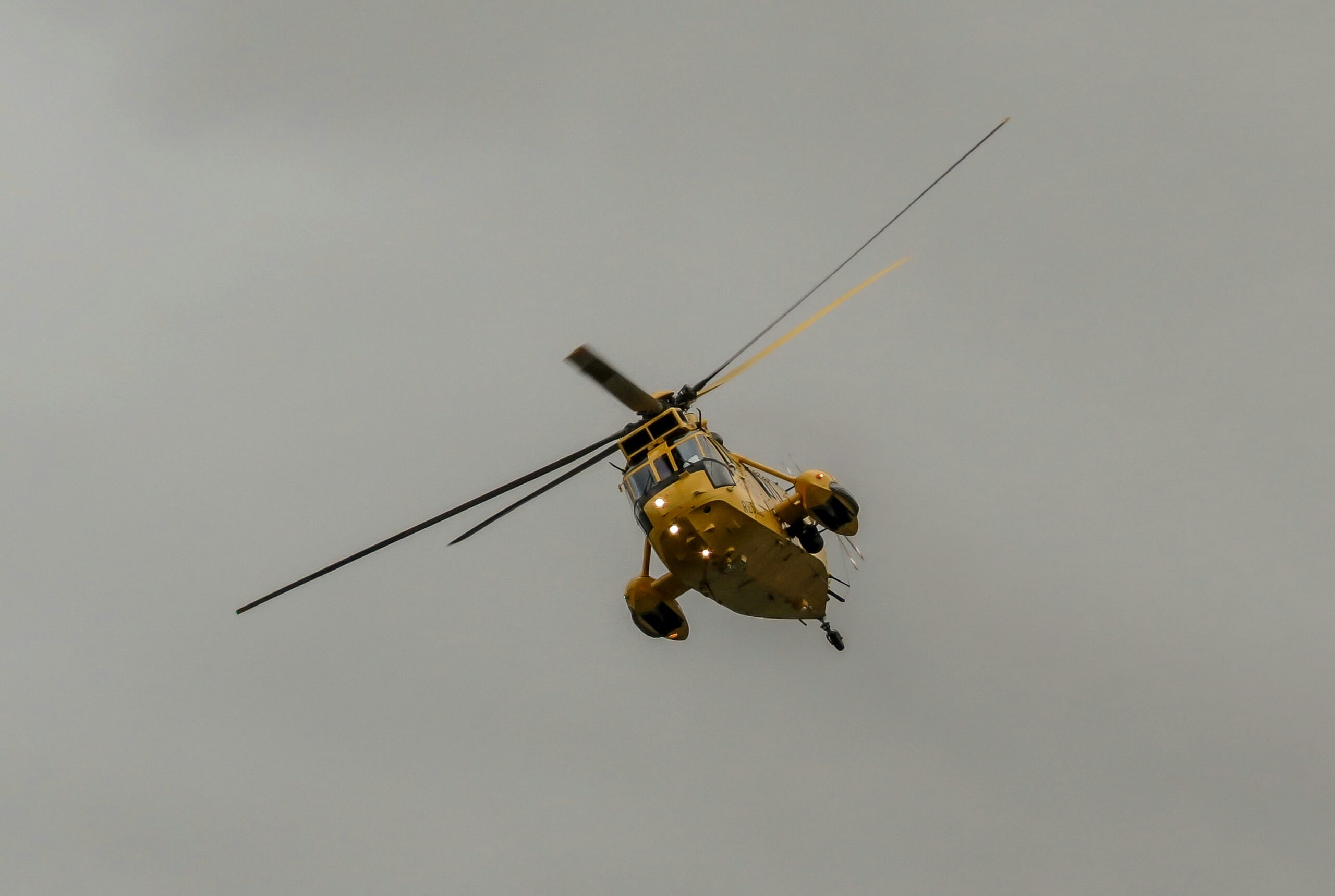Back in early 2000s SeaKing airframes creaked on decks. Parts wore thin, oil dripped every other sortie, and log books filled with red lines. Squadrons lost flight hours. Cabinet had no choice they said. They needed fresh metal that could live on cold salt wind. After brief tender Sikorsky won cash for 28 Cyclones. Paper schedule looked tight. It slipped fast. Revise followed revise, each tweak pushing finish line out another season.
Contract Shape and First Tech Goals
The contract forced Sikorsky to fold modern kit into each hull. Specs called for digital glass, strong surface-search radar, and wide acoustic reach. Engineers promised the airframe would:
- Hunt subs in mid-Atlantic belts
- Shadow hostile surface ships from the horizon edge
- Pull downed crew in rough weather
- Shift small detachments of troops or gear when decks permit
The Cyclone rose from S-92 civil body, yet staff said flight code, rotors, and gearbox moved the design to clear combat bracket. Critics feared too much trust on auto logic, not enough stick feel.
Operational Struggles and Safety Concerns of the Cyclone Helicopter Fleet
First “interim” jets—pilots still say that word—landed in Shearwater during 2015 snow. Crews met new screens, deep menus, fresh faults. Some sub modes refused to sync, so maintanence teams worked through nights, coffee cold on benches. Command set 2018 as full-up date. It never came. By late 2017 only a thin slice of the fleet ticked every mission box. Software patches cured bugs then hatched new ones, a whack-a-mole vibe no one liked.
Ionian Loss Spurs Harsh Light
In April 2020, Cyclone tail number 822 crashed hard in the Ionian Sea. All six aboard died. Shock rolled home quick. Media ran the photo of empty frigate deck again and again. Probe teams traced odd flight-control cross-talk. In rare attitude swaps the computer elbowed pilot orders aside. Lawyers for families filed in Quebec court. Sikorsky answered that crews must stick to tested profiles, yet many saw design flaw more than pilot miss-steps.
Maintenance, Upgrades, and the Future Outlook for the Cyclone Helicopter Fleet
While crash talk still loud, techs found thin cracks on tail joints. First two birds showed hairlines. Weeks later tally hit nine. Salt spray and ship heave looked to punish the joint harder than lab trials forecast. Air staff grounded the lot four weeks. Ships sailed with empty hangars and patrol pictures went blind. Sikorsky rushed a doubler plate kit. Naval welders fit metal shims but timeline felt hazy, parts dribbled in slow.
Arctic Trials Offer Glimpse of Promise
Not every chapter ran dark. Winter 2022 drills north of Resolute saw Cyclones hover neat over ice pans. Anti-ice gear held strong, blades clear of rime. Crews logged long legs on one tank and said sensor pack sniffed dense water layers fine. Data piped clean to ops room screens. Those flights gave brass some proof the platform could fight freeze as claimed, though they still worried about tail life later on.
NATO Decks Welcome But Remain Wary
During Joint Warrior ’23 a pair of Cyclones lifted from British Type 23 frigate. Allied officers liked the radar range and quick link speeds. They also whispered about patch history and spare part lag. Few small navies eyed the helo for own fleets, yet they said they would wait until Canada solved small cracks and code quirks. Export hopes parked in neutral, momentum neither dead nor alive.
Parliament Demands Clear Ledger
On the Hill a sub-committee now checks every big gear buy. Cyclone sits front row. Opposition MPs wave the Ionian crash report and ask why tax bills keep rising. Cabinet says complex kit always needs shake-out, shrugging at cost talk. Families of crews push for fuller release of tech findings. Officials speak broad to guard op sec, a stance that feeds more doubt if not handled sharp.
Court Rooms and Contract Dust-Ups
Alongside grief cases, a string of subcontract firms complain about late pay for revised parts. They say Sikorsky changed prints but forgot to write bigger cheques. Mediation crawls on. No bench ruling yet. Observers think private deal will seal the fuss, though one big split could still drag facts into open docket and that could sting reputations on both sides.
New Training Beats Old Muscle Memory
RCAF trainers wrote tight drills to cut pilot slip. Sims now throw wild sensor faults, frozen screens, sudden tail warnings. Younger crews shape in fine, older hands admit fingers hunt analog knobs that no longer exist. The syllabus forces calm button pushes, not brute cyclic pulls. Success rate climbs but some veterans mumble the craft flies them, not other way.
Maintainers Learn Tail Geometry by Heart
Tech schools added modules on stress marks. Any shiny line near tail root means tools down, call inspector quick. Crews log torque cycles per deck slam. Data heads to Ottawa hub that flags airframes in high-risk bracket. Command claims unscheduled groundings already dipped 20 percent. A few sailors counter the sample still too small to cheer yet.
Software Lab Grinds Out Re-code
Engineers in Connecticut and Montreal split code into slim blocks, test, then reload into iron bird rig. They refuse big bang drops; they stage bites that flight crews check in near real sky. One rule: fix old bug, add zero new ones. That rule breaks sometimes, logs fill, cycle restarts. Yet slow path looks safer. Teams think stable baseline may lock by early 26, no promise carved in stone though.
Hardware Tweaks Chase Vibration Ghost
Ship deck landings slam rotors at odd yaw rates. Sensors proved that. So Sikorsky swapped mast dampers, used tougher alloy for strut lugs. Early bench runs cut shake by Five to eight percent, numbers look small yet they spare tail hours in long stretch. Crews say ride now feels bit smoother, shudder ticks softer in seat rails, still not like civil S-92 but closer. Heavy-lift ops like the recent mission where an Australian Chinook helicopter refueled Abrams tanks underline the kind of rugged demands modern rotorcraft must meet.
Think-tank writers map Cyclone saga beside other smart-code weapons. They warn that leap to deep automation often hides risk path. They also note Canada could end as case study on how to rescue such a fleet without dumping billions into scrap. If repairs stick, the program may set playbook for future auto-heavy rotor craft.
Norway, Denmark, Chile each run numbers on next sub-hunter buy. They like Cyclone’s sensor blend yet fear start-up pain. Diplomats ask informal, “Are cracks gone for good, is software calm now?” Canada answers polite but firm tests still running. Possible export deals stay on shelf till trendlines prove flat.
Fleet Pulse at Close of 2023
By Dec 23 seventeen Cyclones fly lines, five sit in deep dock, six rotate through mid-level check. East and West Coast frigates share birds by slot. Sortie rate climbs slowly. Crews manage anti-sub loops that last four hours and they log pass marks. Still, spare part lag keeps planners edgy, budgets stretch, and every unplanned down-day shows red on board status board. In this context, Canada will increase defence spending as part of a broader effort to modernize its armed forces.
Sikorsky CH-148 Cyclone Helicopter Advances Amid Software and Structural Fixes – March 2025 Update
Jump to Mar 25. Ottawa pushed major control-law refresh. New kernel code stops auto pitch commands above 30-degree bank. Pilots get final vote by hard logic rule. Early flight tests show smoother hand-off in tight turns. Engineers pulled lessons from civil Airbus fly-by-wire clan to cut risk of computer over-rule.
Tail Overhaul Sees Real Steel
Fresh alloy tail booms shipped last fall. Weld pattern spreads load wider, angle braces run deeper. Inspectors logged zero new cracks after 250 deck cycles. That stat beats old build easy. Crews trust ramp ops more, they no longer squint at joint every dawn.
Public Portal Opens the Hangar Door
Navy web page now posts maintanence milestones, mod bulletins, and tail hours per airframe. Civilians can read downtime graph with no big classified hole. Transparency looks rare yet welcome. Families of lost crew say step feels late but still good.
Lawsuit Nears Quiet Finish
Families from Ionian crash and Sikorsky lawyers edge to sealed settlement. Insiders hint at mix of payout and future design pledges. Court gag will likely hide sums. Some MPs think open judgement would help wider safety culture, others fear long trial would stall fix road-map.
No Major Mishaps Since Portal Launch
From March ’24 to today ops log shows no hull loss or severe damage. Minor alerts happen but crews land safe. Commanders highlight two winter rescues where Cyclone winch picked survivors off ice ridges in Beaufort Sea. Those wins matter for public faith, plus they tick mission box clear.
Next Horizon: Smarter Threat Filters
Software block 4, now in sim rig, fuses sonar pings with passive ESM in single screen. It lets tactical officer rank contacts faster, save clicks. Beta pilots say load feels lighter, they spot periscope wakes sooner. Release aims for Q2 26 if tests keep green.
Analysts see program curve bending upward. Structural worries fade, code path steadies, sortie stats inch higher. Skeptics stay present, they warn hidden faults may lurk. Yet mood on deck seems brighter than two years back. If cash holds and parts flow steady, RCAF may keep Cyclone spinning till 2040-plus.Canada bet big on an advanced sea helo and paid in delay, grief, and big invoices. Now fixes stack up, mishap rate slides, and crews at last start to trust their kit. Work still waits—software polish, spare chain speed ups, and auto law guardrails—but path no longer looks lost. Ongoing efforts on software polish and spare chain improvements mirror challenges seen in other helicopter programs. For Arctic patrol and NATO decks alike the Cyclone story edges from cautionary tale to rough proof that rescue is possible when a fleet fights back against its own birth pains.
REFERENCE SOURCES:
- https://canadiandefencereview.com/ch-148-cyclone/
- https://en.wikipedia.org/wiki/Sikorsky_CH-148_Cyclone
- https://www.canada.ca/en/department-national-defence/services/procurement/ch-148-cyclone.html
- https://skiesmag.com/features/epic-expedition-proving-ch-148-cyclone-capabilities-north/
- https://www.flightglobal.com/helicopters/families-of-canadian-service-members-sue-sikorsky-over-fatal-cyclone-crash/154204.article
- https://www.flightglobal.com/helicopters/canadian-helicopter-repeatedly-intercepted-by-chinese-j-11-fighters/155686.article
- https://www.canada.ca/en/department-national-defence/news/2023/11/statement-from-the-canadian-armed-forces-regarding-unsafe-intercept-of-royal-canadian-air-force-helicopter.html
- https://www.reddit.com/r/Helicopters/comments/1gvoztj/a_royal_canadian_air_force_ch148_cyclone_landing/
- https://www.lockheedmartin.com/en-us/products/sikorsky-ch148-cyclone-helicopter.html



